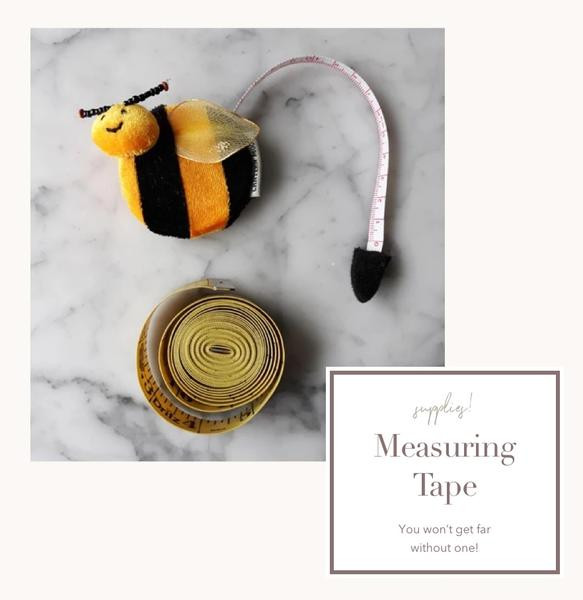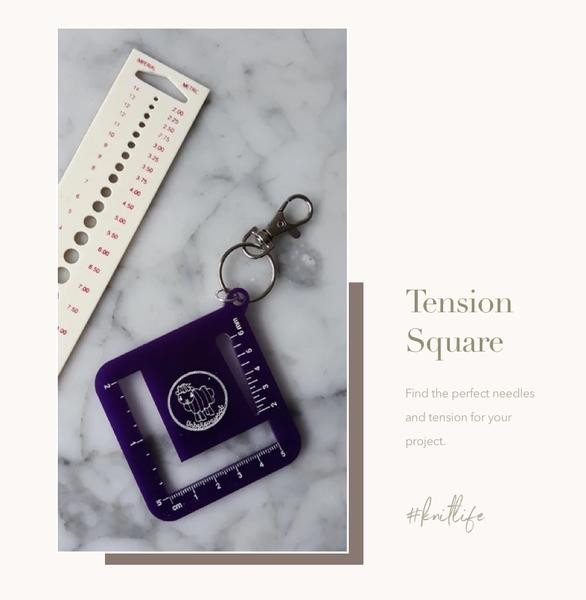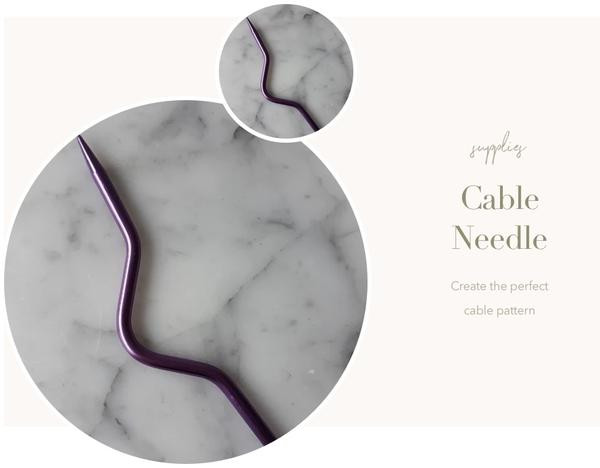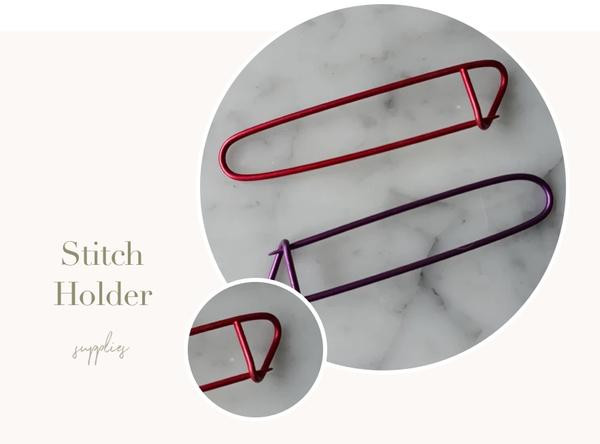1st Oct 2019
8 Must Have Knitting Notions
By Máirín Ní Dhonncha of @aranaccessories
So you have found the perfect knitting needles for your next project but want to take your knitting even further?
In this post I will talk you through 'notions' aka the little tools that help you with your knitting, both during knitting, and while finishing your work!
You might have noticed on knitting patterns several items listed under ‘notions’ – these are the requirements needed to complete the pattern, apart from yarn and needles. You can find quite an assortment of items here, (such as buttons and needles), but you might also find yourself using some useful little tools which are not specifically mentioned in a pattern.
Measuring tape
One of the real workhorses of any knitter’s kit is the humble tape measure. You might not always need to achieve a close fit, but you will often have to knit until the knitting is a certain length. You can, of course, lay your knitting down flat and use a ruler, but there is a lot to be said for buying a really good tape measure, which will not stretch, and will allow you to measure things which are not flat (like people’s bodies!)Correct measurement will help avoid any nasty surprises when the knit has been finished. The tape measure can also be used to measure your tension or gauge square.
Opinions can vary on the necessity of the tension square, but please bear in mind that the gauge given with a pattern is purely the measurement of one knitter’s result when using particular yarn and needles, and it usually is well worth comparing your own knitting using your yarn and needles. If you are usually a tight knitter, you might have to go up a needle size to get gauge – or perhaps the designer is a tight knitter too, and you don’t need to change anything. (But you won’t know that from the start unless you knit your tension square!)
Tension square measure + Needle size chart

There are very useful little tools for checking gauge, such as this little square pictured here. It makes it easier to see the stitches you need to count. This particular one also works double duty as a needle size checker (similar to the one on the left). When I first received one of these, I was so happy to finally have an easy way to check the size of my older needles, where the printed size had faded over the years. It also is very useful to immediately compare US and European sizes of knitting needles – AND it has a little ruler on the other side! I find mine indispensable.
Stitch markers

Stitch markers also often feature in the list of notions required. There are two main kinds of stitch markers: those you leave IN your work until the end to mark a particular point in your knitting (e.g. where an armhole must fit) such as the stitch markers pictured left, which easily clip closed. (These are also useful for holding two sides of work together for seaming larger pieces). The second type ‘travels’ with you on each row of knitting – you slip it from one needle to the other as you come to it. You can use these to mark the beginning of the row (if working in the round) or to remind you when you need to do something differently – e.g. work decreases, or work a different stitch pattern.
Cable Needle

If your pattern involves a cable, chances are it will require a cable needle. You might find you can get by without a cable needle if it is a simple cable where only two stitches are moved; but for a larger cable, it is so much easier to just use a cable needle. I have found that some new knitters are confused by cable needles, and do not always realize that a cable needle is actually a different type of needle, and is not just a shorthand that the designer is using for working the cable. Cable needles are short, double-pointed needles, that have a dip in the middle to make the relevant stitches more secure. Ideally, the cable needle should be the same size as the knitting needles you are using for the cable, but slightly smaller should work well too.
Stitch holders

Stitch holders are required if you need to leave part of the work aside to work on another part, (such as sleeves, for example). For a large project, such as a top-down sweater, you can simple thread a needle with smooth, contrasting yarn through the stitches, but for a small area, stitch holders are very useful. You can think of these as large safety pins!
Needle protectors

If you use double-pointed needles, or DPNs, you will find that point protectors are well worth the small investment, as they will stop your stitches sliding off your needles. I usually stick one end of the needles into the yarn, and use the point protectors on the other end. And, of course, they make it less likely that you will accidentally stab yourself or someone else with your needles! An elastic band will also do the job, but there are lots of cute alternatives out there – like these gummy bears!
You might be able to see from the hole underneath that these ones are two different sizes, to accommodate different needle widths.
Knitter’s needle
And, of course, you will need to weave in your ends when you are finished knitting. A special ‘knitter’s needle’ or good tapestry needle, can ease the process so much. Be sure to get a needle with a large eye, and if you use different yarn weights, get sewing needles of different sizes. Thicker yarns call for thicker needles, but thinner yarns likewise need thinner needles, or the thinner yarn will be forever falling out of the eye of the chunky needle. A notions kit is something that can be built up gradually over time, as items are needed, and indeed, as new must-haves are invented!

